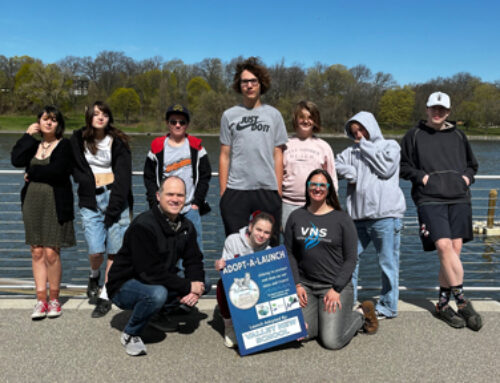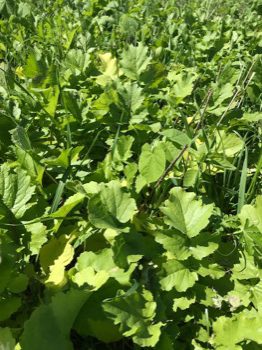
After soil has been in alfalfa for three years, it looks spectacular. It’s dark and crumbly, riddled with earth worms, and has a plethora of organic matter in it. There’s more, but the eye can’t see it. Microbial life is abundant (so abundant it can be measured in tons per acre), improved chemical properties make nutrients more available to plants, and soil aggregates cling to water better. When we were talking about how great soil looks following alfalfa, Bruce Lind, a Waushara County farmer, said “My goal is to get it [soil] like that following corn.” Bruce laughed, as he knew it was a bold statement, but he was dead serious.
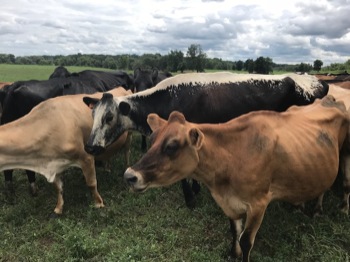 Agriculture predominates land use in our region, which is why spending time improving soil health in the uplands is paradoxically one of the best things for the lowlands. The Wisconsin DNR recently released a draft Total Max Daily Load (TMDL) Report for the Winnebago System. This report helped determine where the system’s influx of nutrients and sediment comes from. It was no surprise that agriculture was listed as the system’s highest contributor of phosphorus and sediment.
Agriculture predominates land use in our region, which is why spending time improving soil health in the uplands is paradoxically one of the best things for the lowlands. The Wisconsin DNR recently released a draft Total Max Daily Load (TMDL) Report for the Winnebago System. This report helped determine where the system’s influx of nutrients and sediment comes from. It was no surprise that agriculture was listed as the system’s highest contributor of phosphorus and sediment.
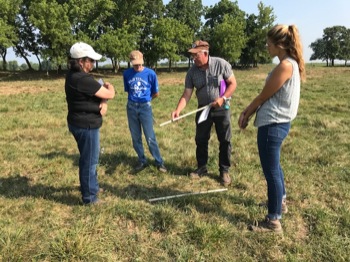 When rill, sheet, and gully erosion occur on exposed agricultural soils, it’s a pretty easy guess as to where that displaced phosphorus laden soil eventually ends up. For farmers, the foundation of their livelihood is quite literally the soil. So, they can’t afford to let it slip seaward. Because of soil’s importance, there is an increasing interest in farming practices that promote both soil health and increase yield. Practices that develop healthy soils also promote water quality, which is why the Winnebago Waterways Team is interested in all the conservation field days that are happening in the watersheds surrounding the Winnebago lakes.
When rill, sheet, and gully erosion occur on exposed agricultural soils, it’s a pretty easy guess as to where that displaced phosphorus laden soil eventually ends up. For farmers, the foundation of their livelihood is quite literally the soil. So, they can’t afford to let it slip seaward. Because of soil’s importance, there is an increasing interest in farming practices that promote both soil health and increase yield. Practices that develop healthy soils also promote water quality, which is why the Winnebago Waterways Team is interested in all the conservation field days that are happening in the watersheds surrounding the Winnebago lakes.
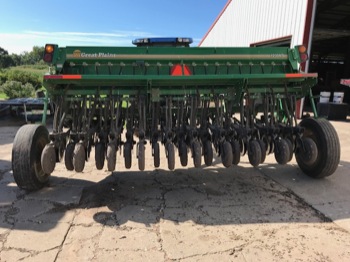 In July we visited Koro Dairy in Winnebago County, where Lyden Rasmussen opened up his grazing operation to showcase what he is doing. Lyden rotationally grazes his dairy herd on a perennial sod of grasses and legumes. In August we checked out Dan Flood’s organic dairy farm in Fond du Lac County. Dan also rotationally grazes dairy cows, but for Organic Valley Coop. Most recently, we were at Bruce Lind’s farm in Waushara County. Bruce and his son Eric run a 400 acre cash-grain operation that heavily employs cover crops, no-till farming, and innovative techniques like interseeding. Interseeding is planting cover covers in between crop rows when the main crop (e.g. corn or soy) is still young. The cover crops establish themselves and then protect and nourish the soil until the main crop is harvested. The interseeded crops can then stay on the field and protect soil through Winter and Spring.
In July we visited Koro Dairy in Winnebago County, where Lyden Rasmussen opened up his grazing operation to showcase what he is doing. Lyden rotationally grazes his dairy herd on a perennial sod of grasses and legumes. In August we checked out Dan Flood’s organic dairy farm in Fond du Lac County. Dan also rotationally grazes dairy cows, but for Organic Valley Coop. Most recently, we were at Bruce Lind’s farm in Waushara County. Bruce and his son Eric run a 400 acre cash-grain operation that heavily employs cover crops, no-till farming, and innovative techniques like interseeding. Interseeding is planting cover covers in between crop rows when the main crop (e.g. corn or soy) is still young. The cover crops establish themselves and then protect and nourish the soil until the main crop is harvested. The interseeded crops can then stay on the field and protect soil through Winter and Spring.
 The objectives of the conservation field days are to share ideas, communicate success (and failure) stories, demonstrate good farming practices, and showcase healthy soils. As a beginning farmer myself, and as someone working towards better water quality, I have always found attending these to be extremely encouraging. They are filled with folks highly interested in improving their farming for both the benefit of their soil and for the landscape at large (including our lakes)! It seems there is increased excitement and thought around improving and sustaining soil health, which, in turn, promotes water quality. It is a win-win for the uplands and lowlands.
The objectives of the conservation field days are to share ideas, communicate success (and failure) stories, demonstrate good farming practices, and showcase healthy soils. As a beginning farmer myself, and as someone working towards better water quality, I have always found attending these to be extremely encouraging. They are filled with folks highly interested in improving their farming for both the benefit of their soil and for the landscape at large (including our lakes)! It seems there is increased excitement and thought around improving and sustaining soil health, which, in turn, promotes water quality. It is a win-win for the uplands and lowlands.
 The implementation phase of the Lake Management Plan is going to rely heavily on farmers utilizing these farming practices to reduce field erosion and runoff. The nutrient and sediment loads coming into the lake are going to have to be reduced to meet water quality goals, and improving farming practices will be one of the most effective ways to do so. It is important to note the the LMP is not a regulatory document. Farmers will not be required to change their practices as a result of the plan.
The implementation phase of the Lake Management Plan is going to rely heavily on farmers utilizing these farming practices to reduce field erosion and runoff. The nutrient and sediment loads coming into the lake are going to have to be reduced to meet water quality goals, and improving farming practices will be one of the most effective ways to do so. It is important to note the the LMP is not a regulatory document. Farmers will not be required to change their practices as a result of the plan.
Cleaning up our lakes largely depends on the efforts of farmers like Eric and Bruce Lind, Dan Flood, and Lyden Rasmussen. The WWP thanks these outstanding farmers for opening up their barn doors and hosting these educational and inspiring events.
Winnebago Waterways is a Fox-Wolf Watershed Alliance program. The Fox-Wolf Watershed Alliance is an independent nonprofit organization that identifies and advocates effective policies and actions that protect, restore, and sustain water resources in the Fox-Wolf River Basin.
Follow the Fox Wolf Watershed Alliance’s Winnebago Waterways Program on our Winnebago Waterways Facebook page or @WinnWaterways on Twitter! You can also sign-up for email updates at WinnebagoWaterways.org.
This article was written by Austin Pethan for the Winnebago Waterways Program. Questions or comments? Contact Austin at austin@fwwa.org or (920) 920-851-4295.

